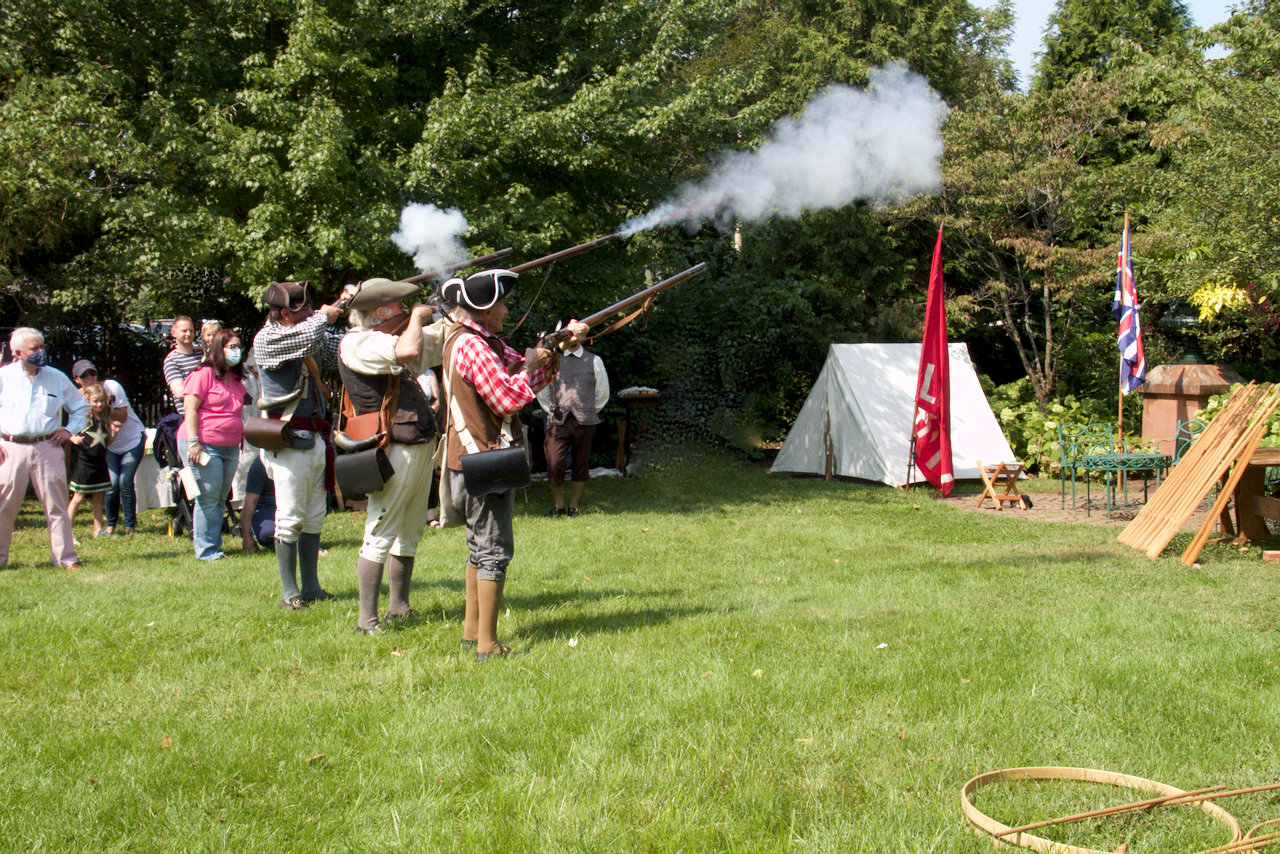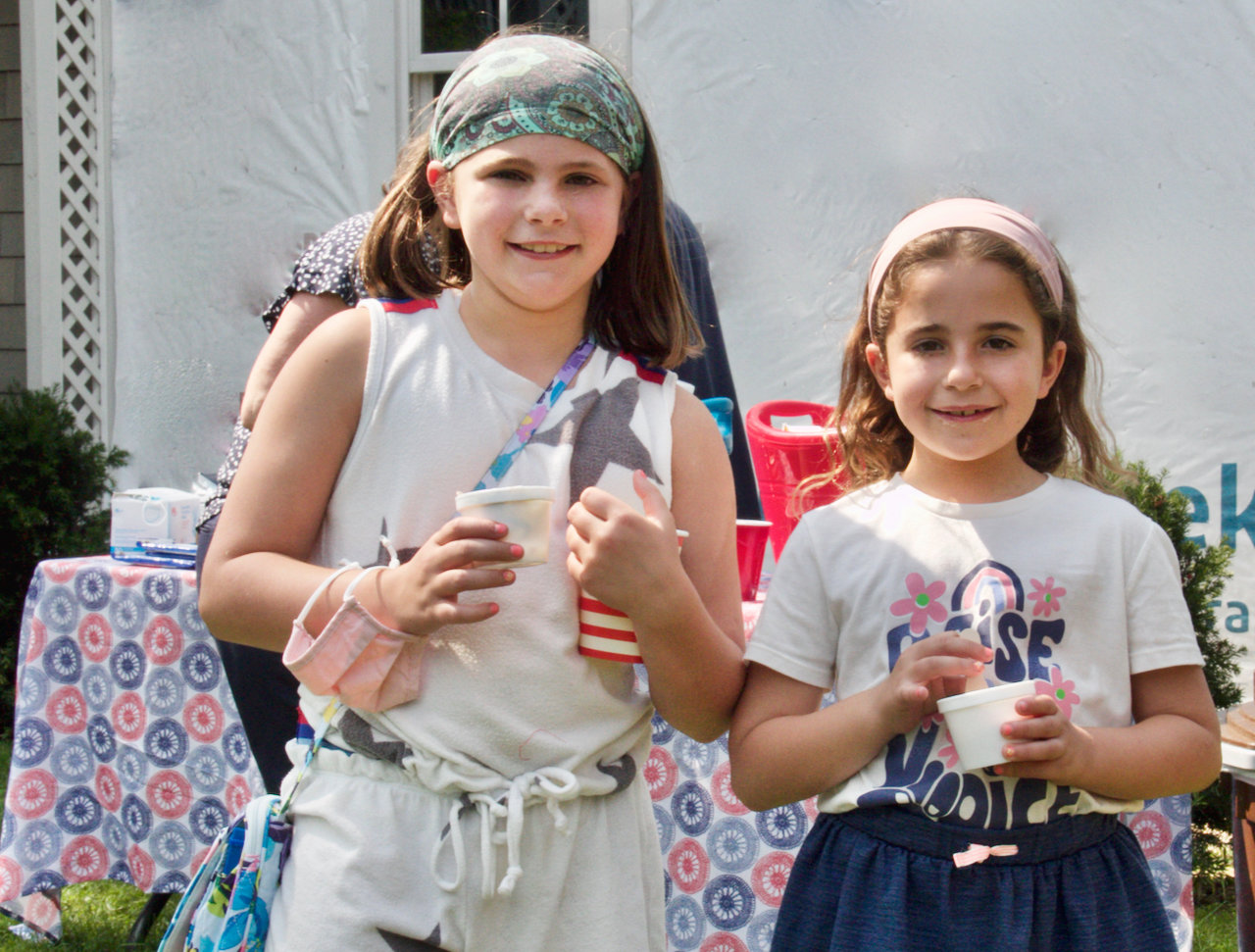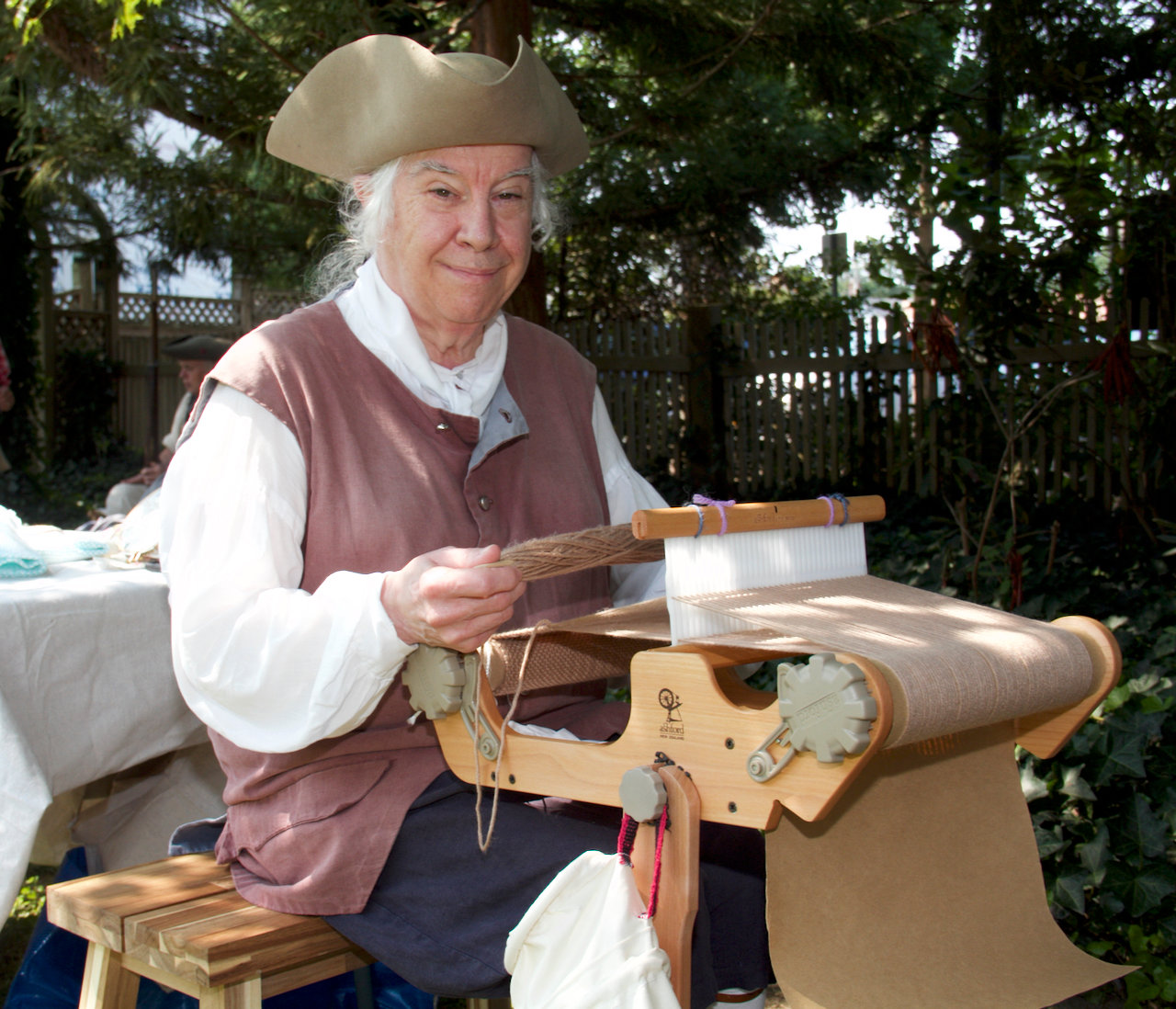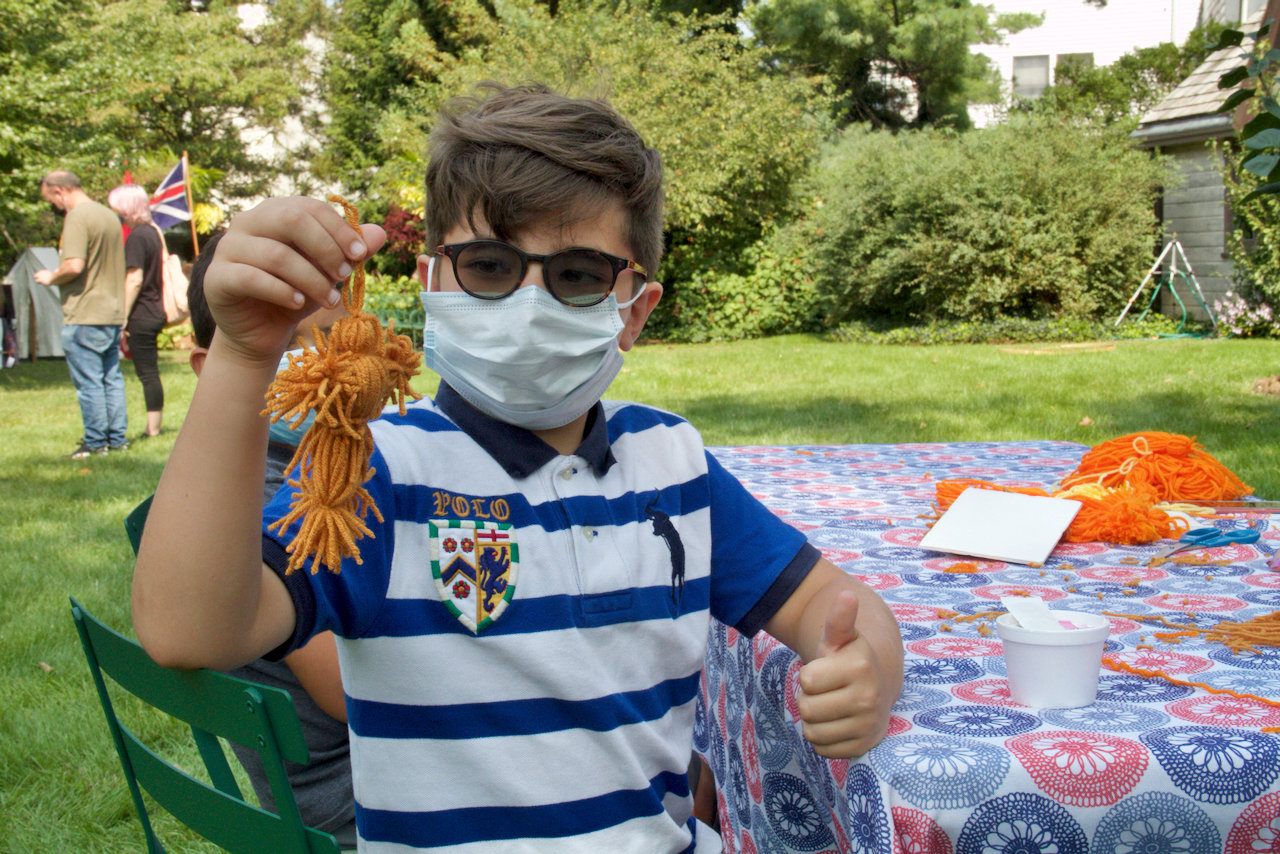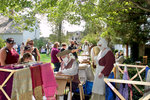Thursday, April 25, 2024
 47.0°,
Mostly Cloudy
47.0°,
Mostly Cloudy
Raynham Hall brings Colonial days back to the hamlet
Museum returns to its roots for an afternoon
Did you know that muskets, the weapons used in the Revolutionary War, were so inaccurate that the combatants didn’t bother to aim at their targets? They couldn’t hit anyone past 100 yards with the muzzle-loaded long guns, Patrick Mantle, of the Huntington Militia, explained, and they took 15 to 20 seconds to load.
The militia’s demonstration of warfare was but one of several educational opportunities visitors enjoyed at Oyster Bay’s Raynham Hall Museum on Colonial Day, on Sept. 12.
“They would just shoot into a crowd to demoralize them,” said Mantle, who demonstrated how to load and shoot a musket. “And it was only effective if everyone fired together to be one wall of steel. Warfare was not for sissies back in the 18th century.”
Drawing a large crowd, the museum’s annual Colonial Day event also featured instruction in the art of weaving, cooking and even making paper, demonstrated by period-costumed re-enactors.
John Collins, president of Raynham’s board of directors, greeted visitors at the entranceway of the museum, a structure that dates back to 1738. All were invited to tour the house museum for free.
“The reason for Colonial Day is for education, which is important,” Collins said. “The reason for Raynham Hall Museum’s existence is to tell part of the story of the American Revolution and, in particular, focus on the Culper Spy Ring, who kept on top of what the British were doing. Robert Townsend” — a spy who lived in the house — “was the most reliable source of information for George Washington.”
Outside on the lawn, Mantle continued his demonstration, focusing on the musket-loading procedure. Each cartridge was good for only one shot, he said, and a shooter needed a full set of teeth, top and bottom, to rip the cartridge open. In those days, he noted, a lot of people didn’t have them.
Soldiers would reload while they were being shot at. “And the muskets didn’t always work,” Mantle said, “so soldiers used bayonets.” To demonstrate, the militia members stuck bayonets on their muskets, lined up side by side and advanced menacingly toward an imaginary target.
In addition to a tour of the house and the demonstrations of Colonial-era technology and culinary arts, visitors also roamed the museum’s education center, open since June. There, dioramas depict Oyster Bay in 1780, as well as the Battle of Brooklyn. A 1½-inch-tall Lt. Col. John Graves Simcoe, commanding officer of the Queen’s Rangers, can be seen leaving the hamlet on horseback against a backdrop of houses, Fort Hill and everyday scenes like a man chopping wood.
The Education Center also features 18th-century-style portraits that “come to life.” Samuel Townsend, a prominent merchant who bought would become known as Raynham Hall in 1738; his son, Robert; a slave named Elizabeth and even Simco all share their stories via a smartphone enhanced-reality app called Digital Tapestry. Created by 360 XR under the auspices of the Robert David Lion Gardiner Foundation, the app is available to anyone with an iPhone or iPad, and can be downloaded at the center.
Outside, on a picture-perfect day, several families took advantage of sunny skies and warm temperatures to picnic on the lawn, where they could hear a trio playing music on instruments from the period — a lute, a viola da gamba and a baroque violin.
HELP SUPPORT LOCAL JOURNALISM
The worldwide pandemic has threatened many of the businesses you rely on every day, but don’t let it take away your source for local news. Now more than ever, we need your help to ensure nothing but the best in hyperlocal community journalism comes straight to you. Consider supporting the Herald with a small donation. It can be a one-time, or a monthly contribution, to help ensure we’re here through this crisis. To donate or for more information, click here.
Sponsored content
Other items that may interest you


